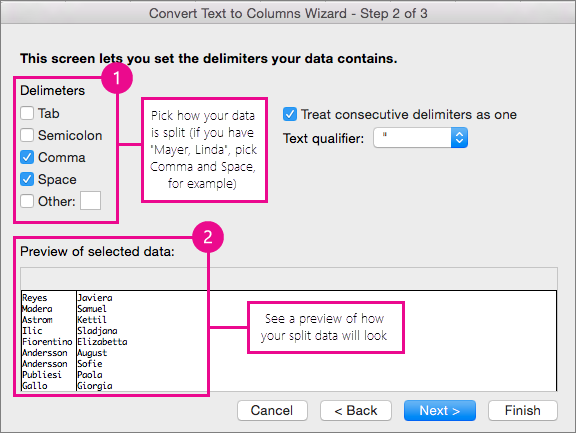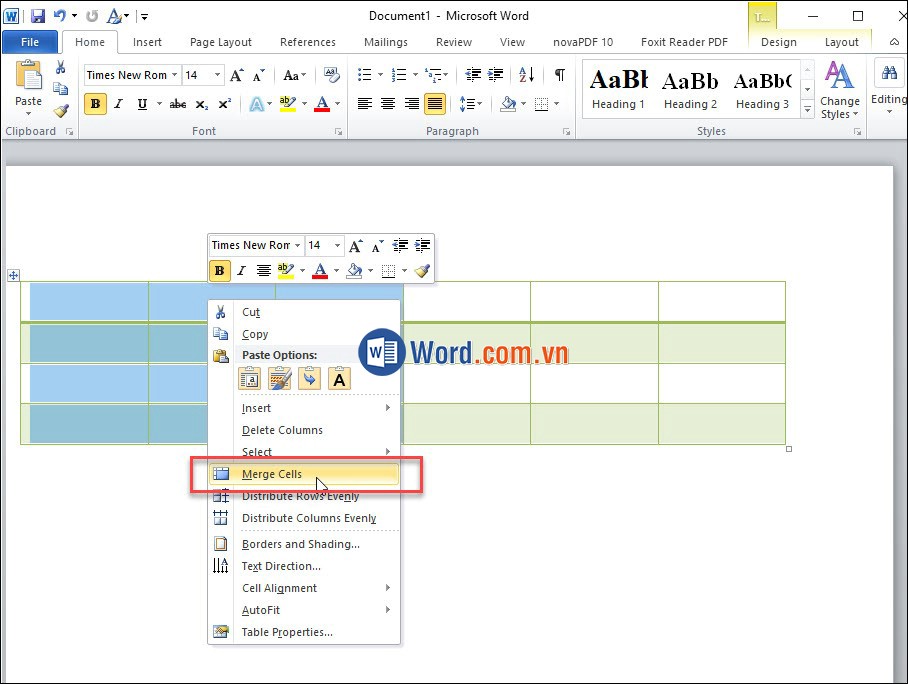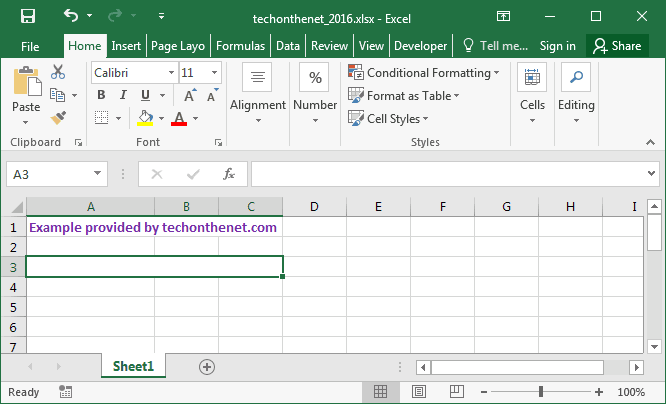

When the “Envelopes and Labels” dialogue box opens, locate the “Options” button and click on it.Ĥ. Next, click the labels button located on the top left of the “Mailings” menu.ģ. Open Microsoft Word and click the “Mailings” tab at the top.Ģ. Now that the list of recipients has been created, the second step is to create the labels template.ġ. Your excel spreadsheet should look like this (with the exception of the specific recipient information: When finished, save your spreadsheet with a name and in a place you’ll be able to locate easily later (I prefer the desktop). Now that the column headings are set, fill in the appropriate information for each of the people you are creating a label for.

#How to merge cells in word 2016 zip
Likewise type City, State and Zip in the fourth, fifth and sixth cell respectively. The first row will be the column headings, so in the first cell type the word First, in the next cell type Last and in the third cell of the first row, type Address. Since we’re creating mailing labels, the data we will be merging will be first name, last name, and address.Ģ. (This works with Google Docs’ spreadsheets too).
#How to merge cells in word 2016 software
Open Microsoft Excel or whichever spreadsheet software you use. Merge Data from an Excel Workbook into a Word Documentġ. The first thing I would do is create the Excel worksheet from which my Word template will pull data from. Let’s say I want to create mailing labels for a “save the date” postcard. This will allow the mapping process to go a lot smoother (I’ll talk about mapping a bit later). You need to make sure the column headings are recognizable and properly labeled. The first and most important is your list and data within the list.

There are three main steps involved in building a merged document. Imagine the possibilities, especially for direct mail purposes. Everything from envelopes and letters to name badges and table tents, data merging will eliminate the exhaustive task of typing each record by hand by pulling data from a designated Excel file. Merging data from an Excel spreadsheet or workbook is a very basic, yet powerful tool that can save a tremendous amount of time when trying to create documents that have variable fields. Here’s how a Table looks using a standard single line border but increasing the cell spacing from the default, Zero.Īs you can see, the single line table border becomes a twin gridline just by adding cell spacing to the same table.Merge Data from an Excel Workbook into a Word Document Go to Table | Alignment | Cell Margins | Default cell spacing | Allow spacing between cells. While cell margins are the space between the text and the edge of the cell, cell spacing puts space around each of the cells.Ĭell spacing has a surprising effect on the look of a Word Table with single line borders. Word’s Table Options have an interesting choice, Cell Spacing. When space is tight, reducing the default left & right cell margins can help fit a table or contents into the available space. Change the Top & Bottom cell margins to separate the lines and improve readability. Here’s a single row, highlighted a little by increasing the top & bottom cell margins.Ĭell margins are useful to separate lines in a table, especially when there’s no gridlines. UNcheck the box ‘Same at the whole table’ then change the margin settings. Select the column, row or cell you want to change then go to Table Layout | Table | Properties | Cell | Options. Table cell margins can be changed for a row, column or even a single cell, but it’s nowhere near the main Cell Margins ribbon button. You can, of course have different margins on different sides: Here’s the large cell margins (left) compared to zero cell margins (right). The margins we’ve selected above are quite large, just to show you clearly how his setting changes your table. In the Table Options dialog that opens, use the spinners to incrementally change each of the four margins, or simply type in the margin that you want into each field Top, Bottom, Left or Right. Then click Cell Margins in the Alignment group. To change the cell margins, we again click in the table and go to the Layout tab on the right. They can be set separately for the top, bottom, and either side of the cells. Cell Margins and Cell Spacing are two important settings in any Word Table but they aren’t used much and not well understood.Ĭell margins are the spaces between your text and the edge of the cell.


 0 kommentar(er)
0 kommentar(er)
